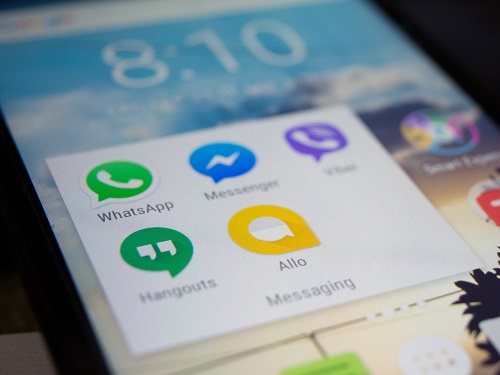In this Insight, we look at how it is possible to uncover and read deleted messages on WhatsApp, and what a number of privacy features on the app mean for business users.
Changes
WhatsApp have made changes as regards message deletion that focus on giving users more control, such as:
– Delete messages for everyone. This allows users to delete messages they’ve sent to an individual or group chat. This can be helpful if a user has sent a message to the wrong chat or the message containing a mistake, and for group admins who need to remove problematic messages in a chat. To use the feature:
– Open WhatsApp, go to the chat with the message to be deleted and click ‘Menu,’ click ‘Delete message > DELETE FOR EVERYONE > DELETE FOR EVERYONE > OK’
– Delete messages for yourself. With this feature, users can delete their copy of messages they’ve sent or received from their phone. This has no impact on the recipients’ chats, recipients will still see the messages in their chat screen and, after clicking on delete, users have 5 seconds to undo the action by clicking Undo (before the message is permanently deleted). To use this feature:
– Open WhatsApp, go to the chat with the message to be deleted and click ‘Menu’ within the chat message. Click Delete message > DELETE FOR ME.
– Chat Lock is designed to protect users’ “most intimate conversations“ behind one more layer of security. Locking a chat takes the thread out of the inbox and puts it behind its own folder that can only be accessed with the user’s device password or biometric, like a fingerprint. It also hides the contents of that chat in notifications.
– Most recently, the ability to edit a message within 15 minutes of sending, e.g. if they contain a mistake, if the sender has second thoughts, or if they’ve been sent to the wrong person. To edit messages, users can long-press on a sent message and choose ‘Edit’ from the menu for up to fifteen minutes after. Edited messages will display ‘edited’ alongside them.
How To Read Deleted Messages
There are, however, ways for users to uncover and read deleted messages in WhatsApp. For example iOS users can delete and re-download the WhatsApp app. After ensuring messages are backed up on iCloud:
– Delete WhatsApp from the phone, redownload the app from the App Store, and sign back into the account.
– A message will appear asking if you want previously backed up messages to be restored. If you select this option, all messages will be restored, including deleted ones.
For Android (11 and above) users, senders can view deleted messages by using the Notification History feature. This involves clicking on smartphone ‘settings,’ ‘apps and notifications,’ and selecting ‘use notification history.‘ This displays all notifications received by the device, including messages sent to the user via WhatsApp which were later deleted by the sender.
Android users can also try restoring WhatsApp messages through a database. This can be done by opening a file browser, going to the WhatsApp folder, clicking on ‘database,’ holding down the ‘msgstore.db.crypt12’ file and hitting ‘edit name’. From here, it’s a case of changing the name to ‘msgstore backup.db.crypt12’ (so it’s not overwritten), going to Google drive and tapping on the three lines (top right), clicking on ‘backups’ and erasing the WhatsApp backup. Finally, users can delete the WhatsApp app and install it again whereupon they will be prompted to recover WhatsApp through a local backup and can choose ‘msgstore.db.crypt12’, and click ‘Restore’ to restore all messages, including those deleted by the sender.
What Does This Mean For Your Business?
WhatsApp is known to be a secure end-to-end encrypted app anyway, which is widely used by business (2 billion+ people use it) because it’s free, effective, instant, secure, and convenient. Security concerns could include the fact that it’s Meta-owned, it has shown malware vulnerabilities (patched last year) and, like other digital messaging services and email, is also vulnerable to phishing scams. That said, most business users trust it and are now invested in using it widely, and WhatsApp has introduced other features to keep business users on-board, e.g. multipole devices using one account.
However, governments (including the UK Government) have for many years been wanting ‘backdoors’ and some kind of access to WhatsApp that would essentially destroy end-to-end encryption and create wider privacy and security risks. Now, with increased competition from other encrypted apps like Telegram and Signal, and also with pressure now mounting as legislation is introduced to try and force a way in for governments (e.g., aspects of the Online Safety Bill, which prompted WhatsApp to threaten to bar UK users), it’s perhaps no surprise to see WhatsApp giving users more ways to personally manage the privacy and security of their messages. Some aspects, such as Chat Lock have even led critics to say that WhatsApp’s becoming a platform for ‘relationship cheaters’. It seems however, that there are still ways around certain aspects of privacy, and the above insight shows that it is possible for users to view deleted messages without too much difficulty.




